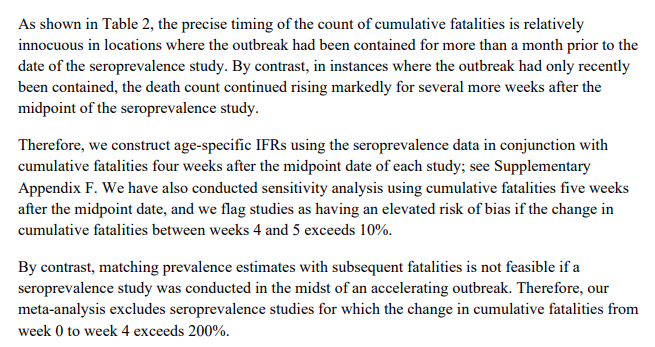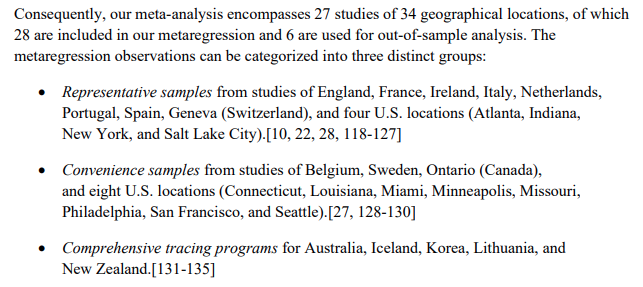
Or on a non-log plot. Look how all three sources of data align- no obvious difference between the PCR based tracing and the Representative anti-body samples. 

Using data from the ec datasets: ec.europa.eu/eurostat/datab… we can easily compute what the expected population IFR should be for European countries, under the assumption of uniform spread in all age groups.
Note how the population demographics actually make expected IFR for Italy, Germany and Spain, markedly higher than the countries of Netherlands, Austria, and UK.
In Figure six they compare actual and predicted IFR estimates - however, I think this is a bit misleading, as I believe that they have used the age-specific infection rates in the data, rather than using the age-specific death rates on population demographics. 

In England, this has resulted in a predicted IFR which is around 40% lower than the assumption of uniform spread as per my estimates above. My guess is they have used ONS age specific infection rates which under states the spread in older groups due to excluding nursing homes.
You will note here that the uniform spread prediction (1.5%) is exactly the observed "actual IFR" and is consistent with the findings of similar prevalence in all age groups in wave one.
(Also, if you think England has more favourable demographics for covid than New York City... I have a bridge to sell you). :)
Putting that aside, its clear that the age structure of populations accounts for an extremely large part of the difference in observed cross country IFRs.
We should also note, that in general if you are below the line, then you did well in shielding your elderly (they had lower prevalence), if you are above the line, you had excess spread in elderly demographics.
These are the best estimates for IFRs in developed countries. The science is done, the results are in: IFR is >1.5% in most rich nations. Covid really is a bad disease, and all the charlatans claiming its much less than 1% are no more worth your time than climate change deniers.
These estimates, from a high quality meta study and analysis, are the best estimates science can offer. A gold standard of data analysis. Always remember:
https://twitter.com/IronEconomist/status/1251898124634906624?s=20
• • •
Missing some Tweet in this thread? You can try to
force a refresh












